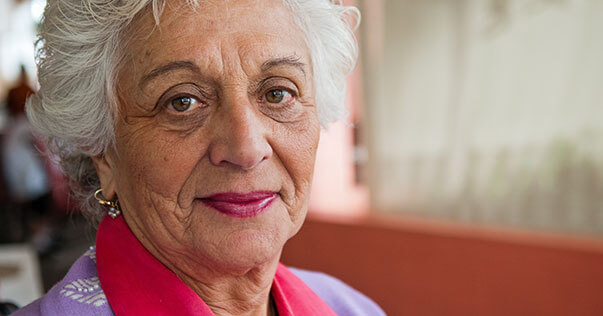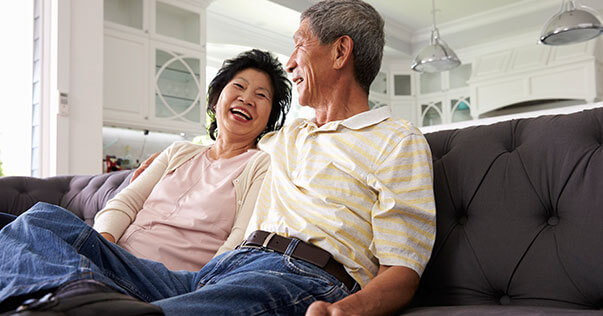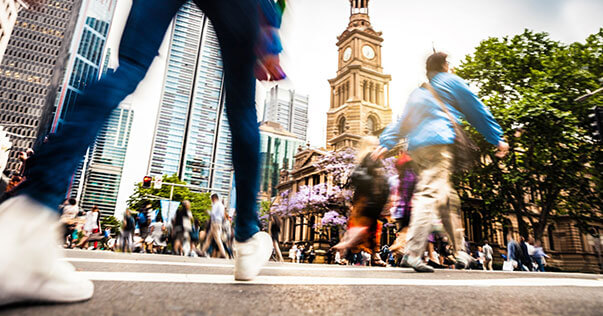CULTURAL DIVERSITY
WHO WE ARE NOW
Australia’s ethnic make-up bears little resemblance to that captured in our first national Census conducted in 1911. That Census revealed Australia as a relatively homogeneous nation. However, there's been so much change in the past 105 years that we can now claim to be one of the most multicultural nations on the planet.
With more than 300 languages spoken in our homes, over 100 religions and more than 300 different ancestries, the Census highlights Australia's rich cultural diversity. This wide variety of backgrounds, together with the many cultures of our Aboriginal and Torres Strait Islander peoples, has helped to create a uniquely Australian identity.
But what does our data say about who we are, and how does our cultural diversity compare to other nations such as the United Kingdom, Canada, New Zealand and the United States?

One in four of us were born overseas
Australians now come from nearly 200 countries, and represent more than 300 ethnic ancestries. One in four people in Australia (26%) were born overseas, a one percentage point rise from the figure recorded in our 2011 Census.
In 1911, the year before the Titanic’s lone voyage and three years before the outbreak of World War I, 18% of our population were born overseas. The most common birthplaces were England and Ireland, though there were also more than 20,000 Chinese-born migrants – a legacy from our gold rush days.
The number of migrants living in Australia then declined as a proportion of the Australian population, before beginning to climb again. Immigration to Australia was relatively stagnant during the two world wars.
By 1966, when England was our largest trading partner, decimal currency was introduced in Australia, and Victoria extended hotel trading hours from 6pm to 10pm, most of our migrants were from Northwest Europe and still primarily the countries of the United Kingdom, followed by large numbers of migrants born in Southern and Eastern Europe. In 1966, 18% of our population was born overseas with almost a third (32%) of these migrants born in England, and only 1.6% from India and China combined.

Demography reveals closer ties to Asia
The proportion of overseas-born people from Europe has been in rapid decline in recent years – from 52% in 2001 to 40% in 2011, and 34% in 2016. That’s from one in every two migrants to one in every three in the space of 15 years.
Conversely, the proportion of migrants born in Asia has increased – from 24% of the overseas-born population in 2001 to 33% in 2011, and 40% in 2016. Again, in the space of 15 years, we’ve gone from one in every four migrants coming from Asia to two in every five.
England is still the most common birthplace of migrants to Australia (15%), but that share is less than half our 1966 number. The big movers over the past five years have been China (from 6.0% to 8.3%) and India (5.6% to 7.4%). Their combined figure (16%) means that, for the first time, there are more Australians of Chinese and Indian birth than of English birth.
This not only provides a huge contrast to the 1911 Census, but it also reveals our increasingly closer ties to Asia.
Overseas-born people are older too, with a median age of 44 compared with 34 for locally born Australians. Interestingly, the median age of migrants born in Asia is only 35 years, compared with 59 for those born in Europe – reinforcing the shift in the demographic of new Australians.

What our ancestry says about us
Ancestry represents the cultural or ethnic group that a person most closely identifies with, rather than just their place of birth. In 2016, the Census identified more than 300 different ancestries in Australia. Our 10 most common ancestries were:
• English (36.1%)
• Australian (33.5%)
• Irish (11.0%)
• Scottish (9.3%)
• Chinese (5.6%)
• Italian (4.6%)
• German (4.5%)
• Indian (2.8%)
• Greek (1.8%)
• Dutch (1.6%).
In 2016, nearly half of all Australians were either born overseas or had at least one parent who was born overseas. This broad cultural mix is constantly growing. In 2016, we added two new ancestries – Pitcairn and Yezidi.
Of second-generation Australians who have both parents born overseas, those aged under 40 were more likely to have Asian ancestry, whereas those over 40 were more likely to have European-born parents. This reflects the changing nature of migration, which was predominantly European until the mid-1970s.

Migrant population branches out, increases religious diversity
Some of the suburbs of our biggest cities have taken on a more multicultural flavour over the years, and our make-up continues to reflect a shift in migrant demographics. While six in 10 migrants still live in New South Wales or Victoria, there have been notable increases in the proportions of migrants calling Queensland and Western Australia home.
In 2016, Sydney had the highest overseas-born population of all capital cities (1,773,496), followed by Melbourne (1,520,253) and Perth (702,545). The 2016 Census also reveals that those born overseas were more likely to live in a capital city (83%), a much higher percentage than people born in Australia.
Religious affiliations, as you would expect with the increase in non-European migration, have also undergone an upheaval over the past 50 years. Christianity was still by far the most practised religion among the overseas-born population (47%) – the first time this proportion has been less than half. Of those people born overseas who reported a religion other than Christianity, 31% were Buddhist, 28% were Islamic, 27% were Hindu, 7.6% were Sikh and 3.2% were Jewish.
Four in 10 of our overseas-born Buddhist population came from Vietnam and China; more than three-quarters (76%) of all overseas-born Hindus came from India and Nepal; and more than one-quarter (26%) of all overseas-born Muslims came from Pakistan and Afghanistan.
While those of us born overseas were less likely to report having no religion than our Australian-born population (27% compared with 34%), it was still the second most common response after Christianity. This compares to 20% in 2011 and 17% in 2006.

More than one in five of us speak a language other than English at home
The 2016 Census not only revealed that we spoke more than 300 languages at home, but more than one in five Australians (21%) spoke a language besides English at home. Mandarin remains the next most common language, spoken at home by one in every 40 Australians.
Moreover, less than half our overseas-born population (42%) spoke only English at home in 2016, while 8.3% spoke Mandarin, 3.5% spoke Cantonese and 3.1% spoke Vietnamese.
For those of us born in Australia, one in 12 spoke a language other than English at home, the most common being Greek (0.8%), Arabic (0.8%) and Italian (0.7%).
A 'nation of nations' that continues to flourish
We come from almost everywhere on the planet – from nearly 200 countries in the world. With more than one in four of us born overseas, more than 300 languages spoken in our homes, more than 100 religions and more than 300 different ancestries, our cultural diversity is enormously rich.
This is the changing face of our multicultural nation – captured and reflected in the Census, and proof that our own ‘nation of nations’ continues to flourish.
This is who we are today.
 Print Page
Print Page
 Print All
Print All